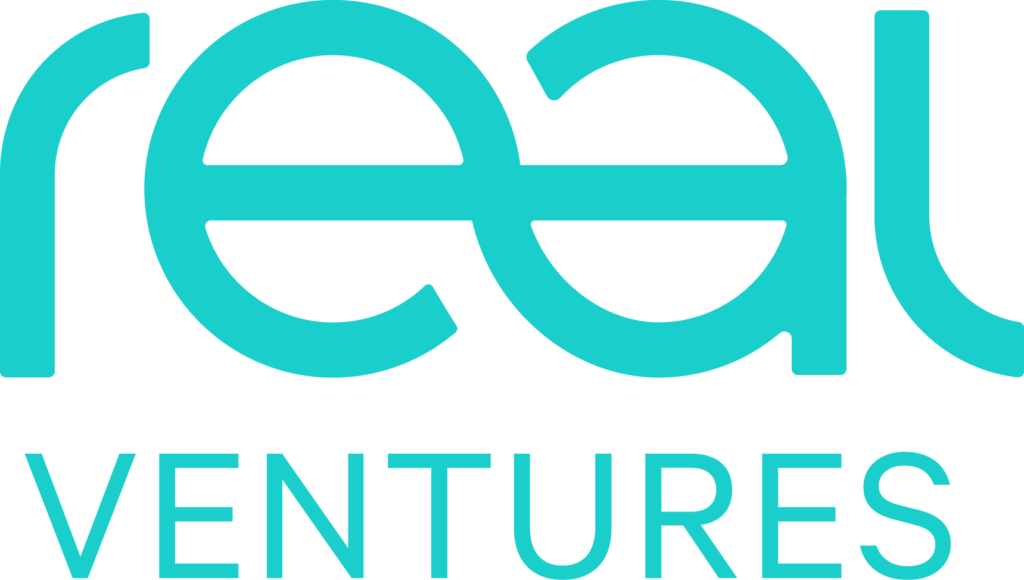Despite what many entrepreneurs think, there’s no standard VC meeting. Some VCs like to be walked through a pitch deck, others simply want to have a conversation. But one thing is for certain: if you’re not adequately prepared, you’re going to walk away with no funding and a deflated sense of yourself and your company, no matter how awesome your vision or product is.
With over a decade of VC operating experience — having funded hundreds of companies and seen thousands of pitches —I feel it’s really important that entrepreneurs better understand how VCs think and how best to run a smooth fundraising process with a minimum of emotional upheaval. So how do you prepare for your meetings?
As mentioned in my previous post, it starts with a bullet-proof company narrative. You also need to have preempted the questions the VC may ask and have clear and insightful answers to these. You need to have done research on the VC so that you can put them at ease by finding commonalities and connections, and you need to learn to read body language and verbal cues so you understand how you’re doing.
Practice, Practice, Practice
You’ve spent three months prepping, but guess what? Your pitch likely still has far to go in terms of refinement. There’s a big difference between having a strong narrative and having practiced it. By practicing it, you get comfortable with the story and get a feel for which parts of it feel organic and which don’t.
The best way to practice is by meeting with VC friendlies, entrepreneurs who have raised rounds, angel investors, advisors or board members — and asking for honest feedback. This process will raise questions and comments, arming you with an arsenal of answers. If you go straight into pitching without practicing, it’s like shooting into the air rather than at a target.
Once you have a clear understanding of the questions to expect and you feel absolutely confident that you have all of your bases covered in your pitch, then it’s appropriate to schedule your VC meetings.
The First Meeting
The first of (hopefully) many meetings with VCs is about getting to know each other. You’re not going to walk in and jump into your pitch immediately. What you need to do is break the ice — tell the VC something interesting about yourself or your team: a quick background of who you are and how you got to the position you’re in today. Maybe cover your crazy passions/hobbies, hidden talents or even personal events and achievements that changed your outlook on life.
VCs are really investing deeply in people. They want to understand why you’re special. The VC wants to ascertain if you’re self-aware, if you’re coachable. Are you a person who listens actively, or do you immediately respond and react to their comments and questions emotionally or off the cuff? Are you very evasive, aggressive, or are you very thoughtful and articulate?
Within the first five minutes of your first meeting, your goal is to present yourself in a way that establishes an authentic connection. Maybe you share an alma mater. Perhaps your career paths are similar. Or maybe you’ve done something so remarkable that anyone would raise their eyebrows and lean in. If at the age of 16, you sold $20K in candy to your friends and got banned from selling candy at school, that’s interesting information. It tells the VC about who you are. This shouldn’t feel forced or scripted and needs to be genuine and authentic.
VCs don’t write cheques solely based on the business’ momentum and strong unit economics. They also care deeply about how creative and interesting the founders are, how coachable and collaborative they can be, and how that VC sees herself or himself reflected in the founder.
This isn’t about likes and dislikes but more about characteristics and commonalities. The social cues of your life, your ambitions and how you represent yourself outside of your company are the things that VCs care about but might not publicize. That’s why it’s not uncommon to find a VC who went to Stanford Business School and worked for Google, who “subconsciously” likes to invest in entrepreneurs who went to Stanford Business School and worked for Google. They can implicitly assume that this entrepreneur is like them and therefore trust them.
But there’s a way you can break this subconscious bias if you don’t have immediately obvious connections. You can build links by understanding what makes the VC tick. Before you go into each VC meeting, you should understand that particular VCs pathway into the business. Very few start with VC and continue with VC. They may have started as an entrepreneur, an investment banker, an analyst, a product manager. You can use LinkedIn, blogs and social media to look at their history, find out their favourite sports or activities and draw connections between you.
This can help you navigate conversations because you can create a personal exchange:
- “Oh, you worked at PayPal from [X year to X year] in this group? I know [this person] who worked at PayPal at the same time. Do you know them? Oh! You do? Amazing!”
Or commonalities:
- “You studied computer science at Berkeley? I studied computer science at U of T.”
- “I saw on Twitter that you were recently at Whistler. I did my first Whistler trip last winter and it’s one of my favourite places to ski ever!”
It’s about creating familiarity. The VC may think that there was little to no connection at the beginning, but suddenly, you’ve made the world feel much smaller. You might have people in common, have approached your careers in a similar way. You may both have the same ambitions. But if you don’t take the time to do the research, you’ll likely struggle to establish that connection in the first five minutes of the meeting. It’s not always easy, but there is always a way to do so. Establishing an authentic connection will radically increase your chances of landing a second meeting.
Telling Your Story
The deck is a visualization of the story you’re telling. Your job is to enhance that story with a robust, personalized exchange of information that makes it even more interesting. That’s why I don’t believe in sending VCs any materials other than your pitch deck before the meeting.
Imagine you’re the founder of a life science company that’s building a technology platform that helps scientists find biological compounds (i.e. Benchsci, a portfolio company of ours). If the slide says: Scientists and pharmaceutical companies purchase $40 billion dollars of biological compounds a year,” don’t simply repeat that information aloud. It’s obvious — it’s on the slide.
This is your opportunity to add something more personal or anecdotal:
“My co-founder was a bench scientist and he was going through dozens of expensive biological compounds every single month. He was wasting more than 60 percent of them because he wasn’t able to find which compounds were going to work in his experiments.”
Yes, you’re telling them that it’s a 40 billion dollar market (what is shown on the actual slide), but you’re entering that piece of the discussion with ancillary information that makes it more interesting, makes it more believable, makes it more relatable, and makes it more personal. That’s what the best entrepreneurs do. Plus, none of this information was in the deck they have already seen, so its new and interesting — a way to pull them into the conversation.
Understanding What Real Interest Looks Like
You feel the meeting is going well but don’t know if there is genuine interest. If a VC says: “OK, yeah I get it. I get it, okay,” does it mean that they understand the point and it’s time to move on, or are they trying to communicate that they’re not interested and want to get to their next meeting?
The key is understanding nonverbal cues by reading facial expressions and body language. Are they slouching away from you, or are they leaning into the conversation? Are they tapping their feet or fidgeting with an object or are their hands folded neatly across the table? Are they finding ways to politely glance at their phone without being caught? Are they rapid firing one question after the next? These cues can tell you if you need to shift the conversation to other areas that might pique interest, or find new ways to improve your pitch for the next meeting.
From first-hand experience, it’s hard for a VC to contain excitement when they meet an entrepreneur they like and a business that is interesting. First meetings that lead to second and thirds often go long. You’ll find the hour flashing by and feel that the conversation didn’t even scratch the surface. If the meeting didn’t go that way, you can assume there is a big chance the interest isn’t strong or the pitch is off.
If a VC really loves what you’re doing, they will let you know right away. VCs have to compete for the best entrepreneurs. The best entrepreneurs get to pick and choose which VCs they want to work with. VCs aren’t in the business of wasting your time, but they often don’t know how to say no in a way that doesn’t crush your soul. They likely don’t have the time to craft a message that is informative and still encouraging. Or maybe your pitch wasn’t very clear, so they don’t know how to think about your business but are afraid of rejecting something they don’t entirely understand.
Maybe Usually Means No
Here’s a list of “nos” that aren’t an explicit no but they’re still a no:
- “I love what you’re doing but it is too early.”
- “Love what you’re doing. We’d like to see more traction.”
- “Love what you’re doing but we don’t invest in this space.”
- “Love what you’re doing. But we don’t see the market being big enough.”
Those are pretty clear “nos”. The unclear “nos” that most entrepreneurs get hung up on and misread are:
- “Love what you’re doing. Let me talk to the partnership next week and get their feedback.”
- “This is great, you’ve accomplished a lot and are in the right space at the right time.”
Cues To Real Interest
If a VC is interested, they’ll say something immediately after the meeting like:
- “I want you to speak with my other partner.”
- “I want to schedule a follow up with you in a few days.”
- “I want to get access to more information. Can you send me some customer references? Can you send me your financial model?”
- “Would you mind speaking to an expert we know about your company for feedback?”
Following Up
You have left your first meeting and feel it went really well: you nailed the narrative, you established a connection, you read and understood the body language and facial cues. The meeting was focused on the “why” not on the “hows” and the “whats”. There is a request for more information or a follow-up meeting. The next thing you have to do — no matter what’s happening in your business — is follow up with that request. You should not postpone it for more than 24 hours.
Have your team put the requested information together, put it in a data room and give the VC access to it ASAP. You don’t know what other startups this VC is meeting with. They could be meeting with three other companies this week. They could have met with two other companies last week and are on their second and third meetings with them. Be responsive and be responsible for getting them that information in a timely matter.
Your only goal in the first meeting is to get a second meeting. Typically if you don’t hear back from them they are either too busy or not interested enough to proceed. It is appropriate to follow up 3 to 5 days after the meeting to thank them for their time and ask if they think it’s a good fit. That’s it. Don’t follow up again unless you hear from them. Move on. There are other VCs you can pitch to. It’s a numbers game. It’s like dating. Not everyone’s going to fall in love with you. What’s most important is not to let it affect or your positive mindset.
In the next and final post, I will dig into the subsequent meetings and partnership pitch, how to set up your data room and what to do if you get multiple term sheets. Remember: fundraising is a process and your preparation and focus are key!
**********
For more insights into the VC fundraising process as well as founder stories, ecosystem deep dives and industry trends, sign up for our monthly newsletter and follow us on Twitter, LinkedIn and Facebook.



